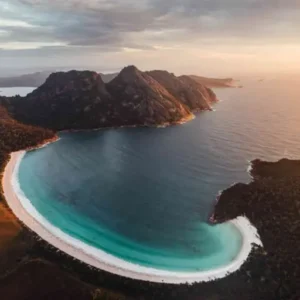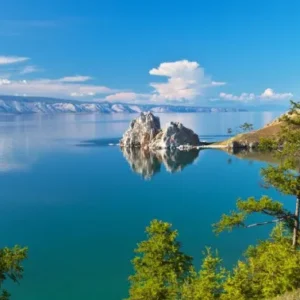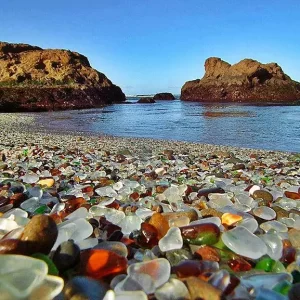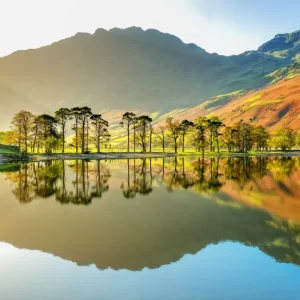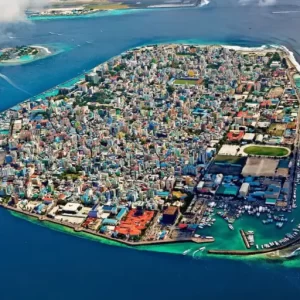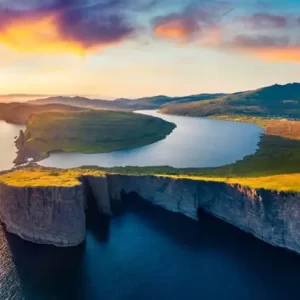Tucked within the borders of Italy lies one of the most unique and lesser-known destinations in Europe—San Marino, a microstate with a surface area of just over 60 square kilometers. Despite its tiny size, the Republic of San Marino boasts an extraordinary history and charm that captivates visitors from around the world.
Founded nearly 1,700 years ago, San Marino is one of the oldest republics in the world. Its economy today thrives on traditional crafts, postage stamp production, and most notably, tourism, which contributes up to 50% of its GDP.
A Mountainous Escape with Breathtaking Views
Perched high in the Apennine Mountains, San Marino is a tranquil escape from the bustle of city life. Its elevated location offers breathtaking dual panoramas: one side opens up to the Adriatic Sea, while the other gazes over the rolling mountains and valleys of San Marino.
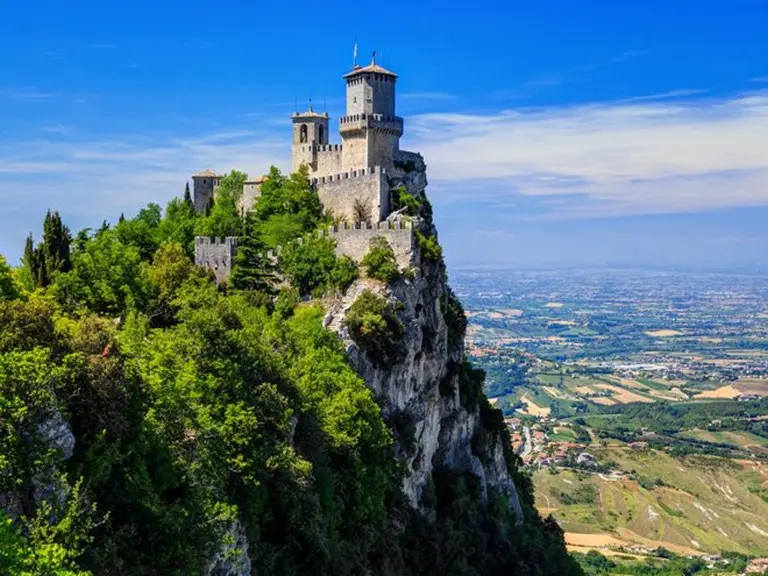
>> The largest stone sphere in Europe in Bosnia: A mystery between nature and man-made origins
The Government Palace, also known as the Palazzo Pubblico, is a historic building completed in 1894, located in the Old Town—a UNESCO World Heritage Site. This picturesque medieval quarter is rich with cultural and religious landmarks and dotted with artisan shops, museums, and traditional restaurants offering the best of local cuisine.
How to Reach San Marino
San Marino is easily accessible from major Italian cities. It’s just 30 minutes from Rimini, 1.5 hours from Bologna, and 2.5 hours from Florence by car or bus. Since there’s no border control between Italy and San Marino, no passport is required to enter. However, travelers can request a souvenir entry stamp at the tourism office—an unusual keepsake from one of the world’s tiniest countries.
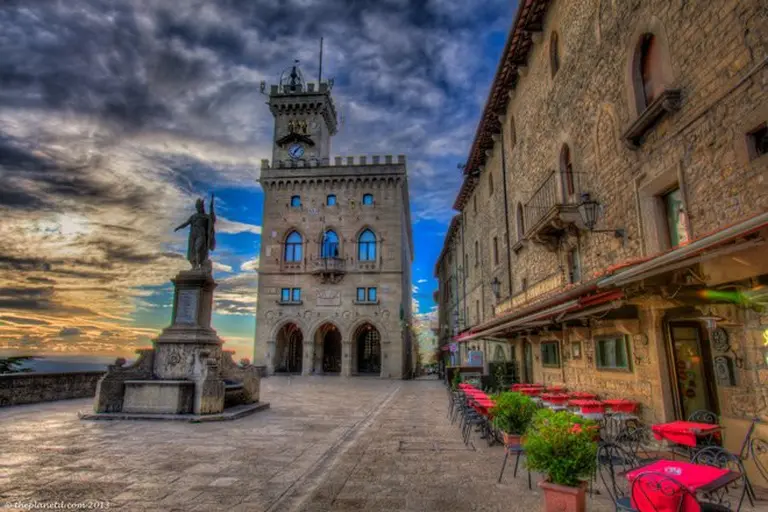
A Land of Art, Heritage, and Legends
San Marino is a treasure trove of neoclassical art and architecture. One of its most famous landmarks is the Statua della Libertà (Statue of Liberty), sculpted by Italian artist Stefano Galletti. Located in Piazza della Libertà, this elegant statue has become a national symbol, even appearing on the country’s euro coins.
According to legend, the country was founded in the 4th century by a Christian stonemason named Marinus, who fled Roman persecution under Emperor Diocletian. The independence of San Marino was officially recognized by Pope Urban VIII in 1631, cementing its place as one of the world’s oldest sovereign states.
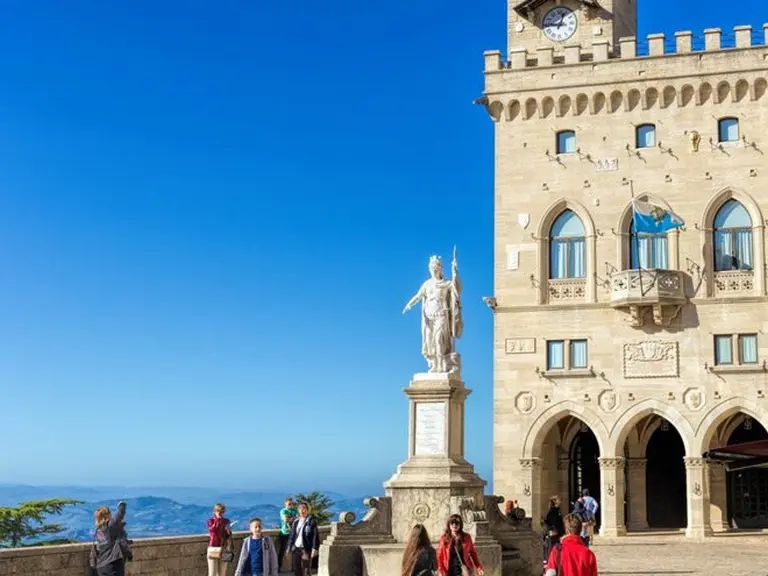
>> The surreal beauty of a Lake suspended between Sky and Sea
A Green Oasis in the Heart of Italy
San Marino is a verdant hilltop sanctuary, ideal for travelers seeking peace, nature, and history. Sitting proudly atop Mount Titano, the entire republic resembles a storybook fortress surrounded by vineyards, medieval castles, and rolling countryside. Unlike Italy’s bustling cities, San Marino offers a refreshing blend of serenity, panoramic landscapes, and timeless heritage.
Whether you’re drawn by its ancient history, its breathtaking views, or simply the thrill of exploring a lesser-known European gem, San Marino promises a journey unlike any other.
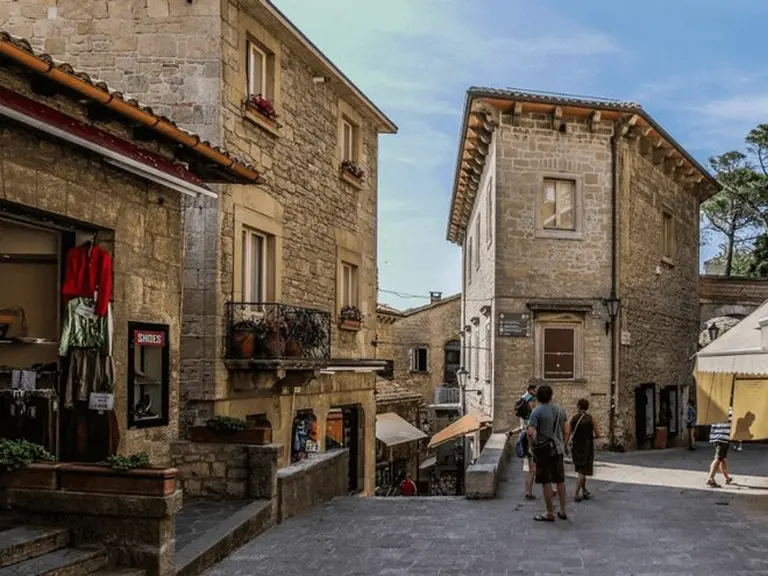
>> The astonishing beauty of the ”Eye Of the Earth” water lake is simply surreal
Travel Tips for Visiting San Marino
1. Visit Early or Late in the Day for Fewer Crowds
San Marino can get quite busy during the daytime, especially in peak season (May–September), as many tourists make day trips from Italy. For a more peaceful experience, plan your visit early in the morning or stay overnight to enjoy the quiet charm of the Old Town at sunset or sunrise.
2. Don’t Miss the Three Towers of San Marino
The country’s most iconic landmarks are the Three Towers: Guaita, Cesta, and Montale. These medieval fortresses perched along Mount Titano offer panoramic views, fascinating history, and great photo opportunities. You can hike the scenic trails that connect the towers—perfect for nature and history lovers alike.
3. Get the Passport Stamp
Even though you don’t need a passport to enter, you can get a unique San Marino passport stamp as a souvenir. Just stop by the Tourist Information Office in the Old Town (usually open daily), and for a small fee (about €5), you’ll receive an official stamp in your passport.
4. Try Local Specialties
Don’t leave without trying traditional San Marinese dishes like Torta Tre Monti (a layered chocolate and hazelnut cake symbolizing the Three Towers), piadina flatbread, or homemade pasta with local sauces. Many local restaurants also serve regional wines and liqueurs produced in nearby hills.
5. San Marino Has Its Own Post Office and Currency
While it uses the Euro, San Marino also issues limited edition coins and stamps that are highly sought after by collectors. Visit the Philatelic and Numismatic Office if you’re interested in purchasing some as souvenirs—they make unique gifts!
6. Walking Shoes Are a Must
The historic center is filled with steep cobbled streets and stone steps. Comfortable walking shoes are essential for navigating the town and exploring the towers, viewpoints, and museums.
7. Respect Local Customs in Churches
If you plan to visit religious sites like the Basilica di San Marino, dress modestly (covering shoulders and knees) and remain quiet and respectful during services or when others are praying.
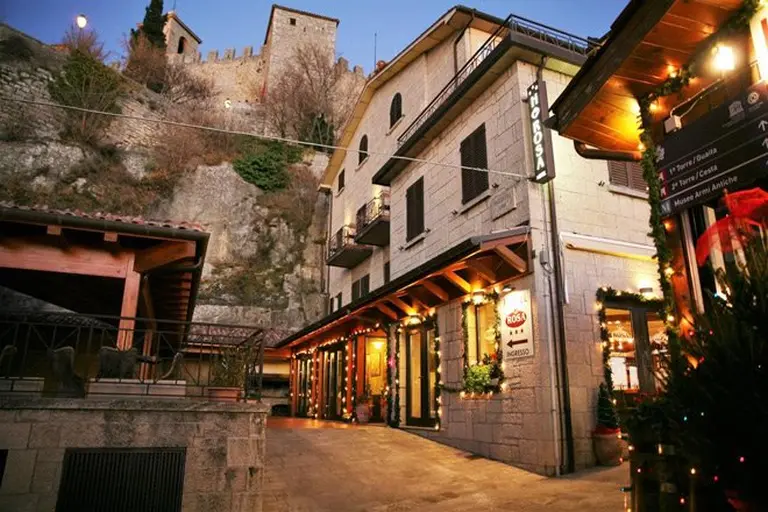
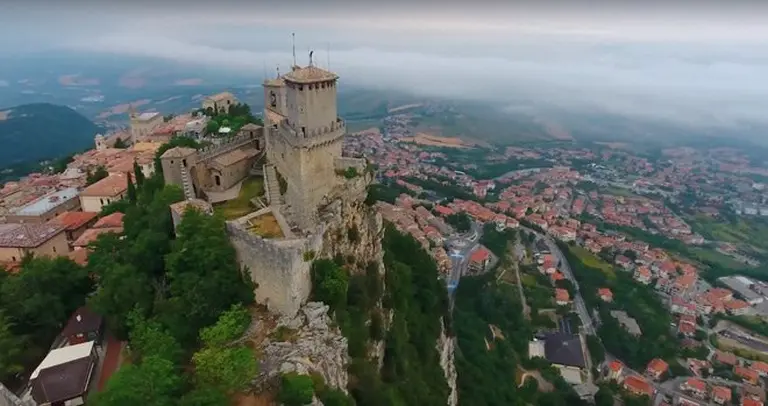
>> Visitors to the magnificent crystal cave feel as though they’ve entered a long-lost realm
FAQ
Where is San Marino located?
San Marino is a landlocked enclave completely surrounded by northeastern Italy, near the regions of Emilia-Romagna and Marche. It’s perched on the Apennine Mountains, just a short drive from Rimini on the Adriatic coast.
Is San Marino an independent country?
Yes, absolutely! Despite its small size, San Marino is a sovereign nation. It has its own government, laws, military, and even postage stamps. It is one of the world’s oldest republics, founded in 301 AD, and prides itself on centuries of independence.
Why should I visit San Marino?
San Marino offers a unique blend of history, culture, and scenic beauty, all packed into a compact, walkable area. Reasons to visit include:
- Breathtaking views from Mount Titano
- Three iconic medieval towers overlooking the countryside
- A charming Old Town (Città di San Marino) that feels like a time capsule
- No crowds, no stress – far from the hustle of typical tourist hubs
- Tax-free shopping and local artisan goods
- A chance to collect a rare passport stamp from a microstate!
What are the top attractions in San Marino?
- Guaita, Cesta, and Montale Towers – the three fortresses that dominate the skyline
- Palazzo Pubblico (Public Palace) – the seat of government with stunning architecture
- Basilica di San Marino – a neoclassical church dedicated to the country’s founder
- Museo di Stato (State Museum) – showcasing artifacts from the Republic’s long history
- Liberty Square (Piazza della Libertà) – great for people-watching and photos
- Mount Titano hiking trails with panoramic views
Do I need a visa to enter San Marino?
If you’re already in Italy or the Schengen Area, you can visit San Marino without a separate visa, as there are no border controls. However, San Marino is not officially part of the EU or Schengen, so it’s technically a separate state.
How do I get to San Marino?
The nearest major city is Rimini, Italy. From there, you can take:
- A bus (about 45 minutes) directly to the Old Town
- A taxi or rental car, which allows flexibility to explore the scenic routes
There’s no airport or train station in San Marino, but it’s easily accessible by road.
What currency is used in San Marino?
Although not an EU member, San Marino uses the Euro (€) as its official currency. It even mints its own euro coins, which are popular among collectors.
Is San Marino expensive?
Not particularly. Prices are generally comparable to mid-range Italian towns, and since San Marino offers tax-free shopping, some goods like perfumes, electronics, and souvenirs may even be cheaper. You can find accommodations, meals, and tours to suit most budgets.
How long should I spend in San Marino?
A full day trip is enough to see the major sights, but if you want to soak in the atmosphere, enjoy sunset views, and explore beyond the Old Town, consider staying overnight. The town is especially magical when the day crowds leave.
What language is spoken in San Marino?
The official language is Italian, but English is widely spoken in tourist areas, and locals are generally friendly and helpful.
Is San Marino safe for tourists?
Yes, San Marino is extremely safe. It has one of the lowest crime rates in Europe, and its small size and peaceful culture make it ideal for solo travelers, families, or couples.
Does San Marino have its own cuisine?
While it shares many culinary traditions with Italy, San Marino has its own local specialties like:
- Torta Tre Monti – a layered wafer cake named after the Three Towers
- Nidi di Rondine – a baked pasta dish unique to San Marino
- Local wines and liqueurs that are difficult to find elsewhere
Can I get my passport stamped in San Marino?
Yes! While there’s no border control, the Tourist Office in the Historic Center offers a special passport stamp as a souvenir for a small fee. It’s a unique keepsake from this hidden gem.
Why does San Marino matter? In a continent full of well-known capitals and major cities, San Marino offers something truly rare—a journey into a living piece of medieval history, untouched by mass tourism. With its awe-inspiring scenery, fascinating past, and warm local culture, this tiny republic leaves a big impression.

